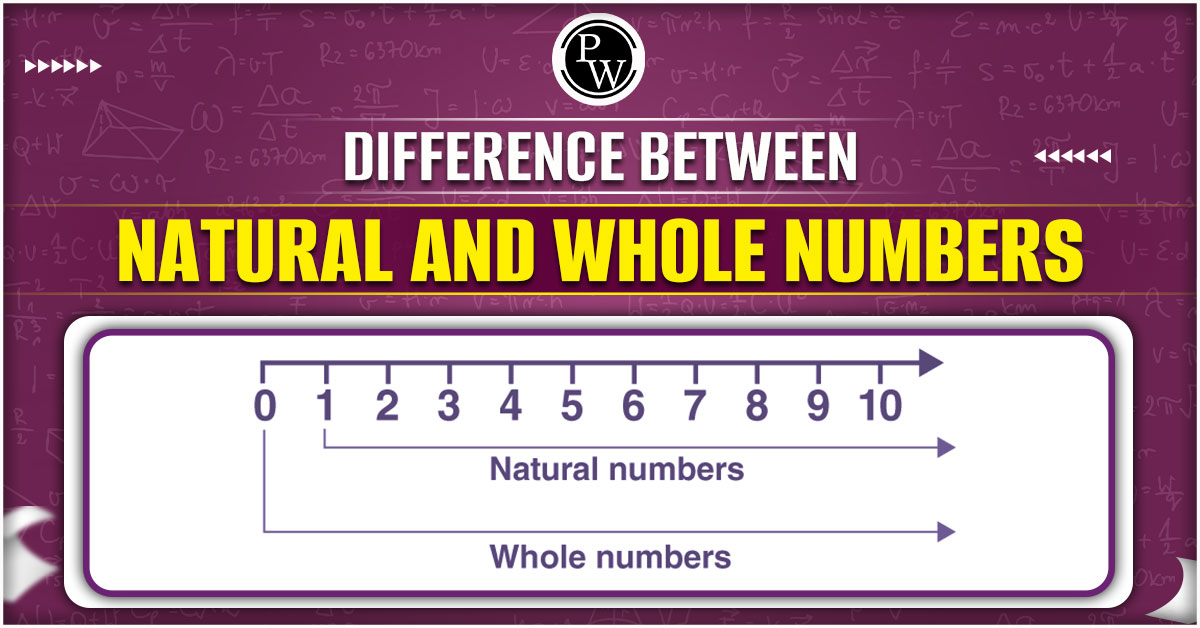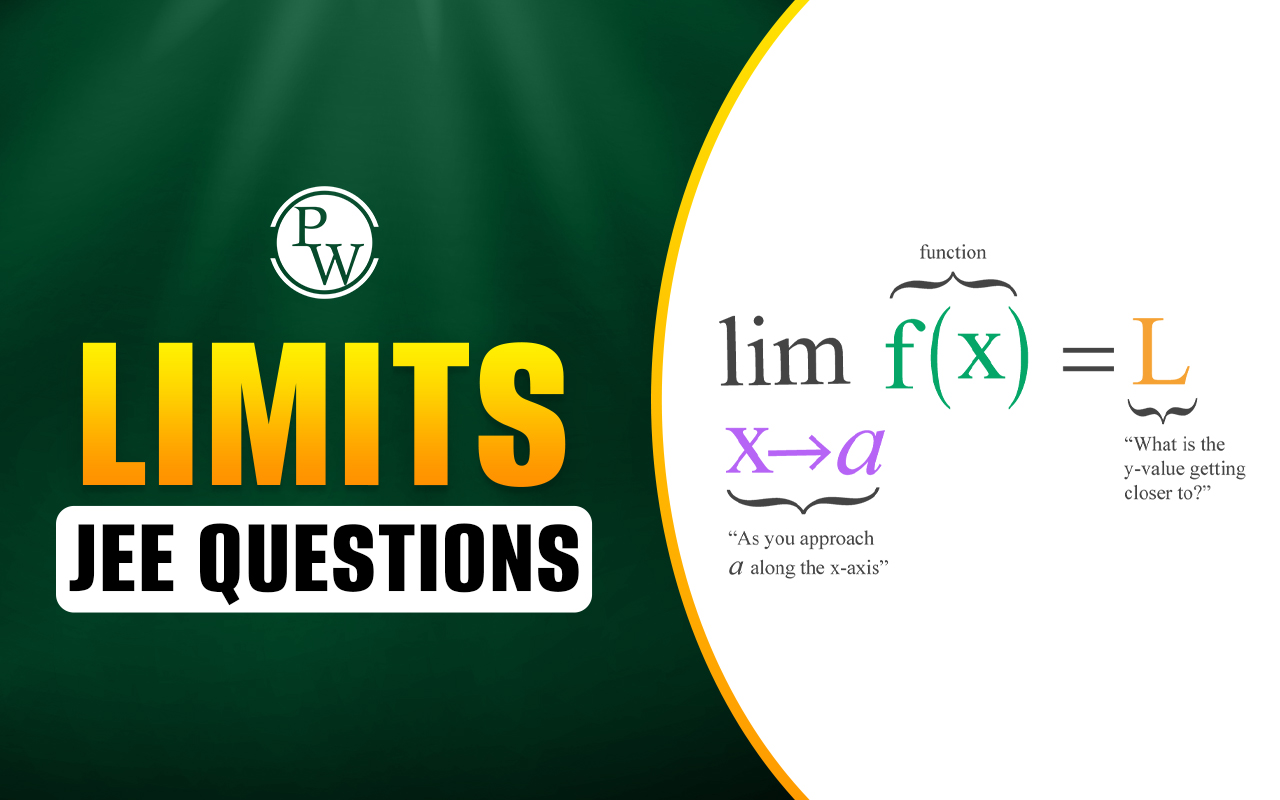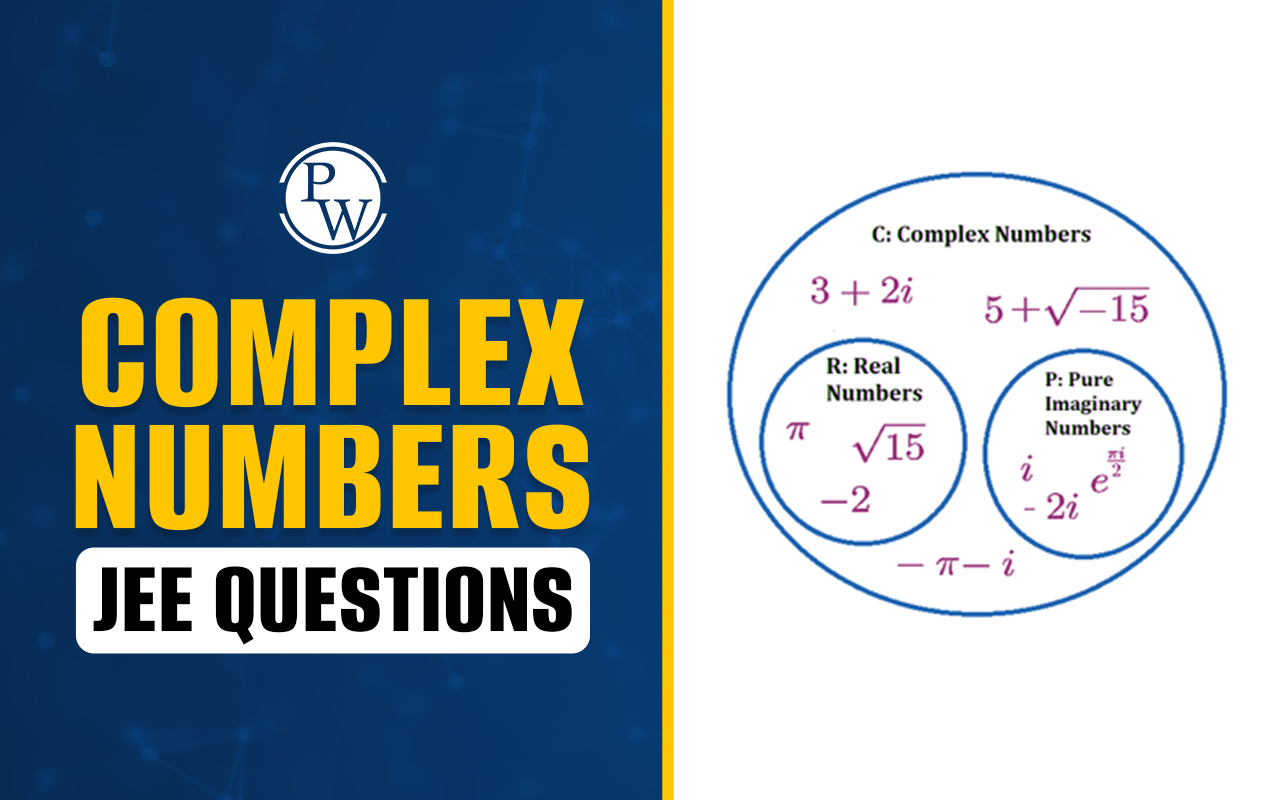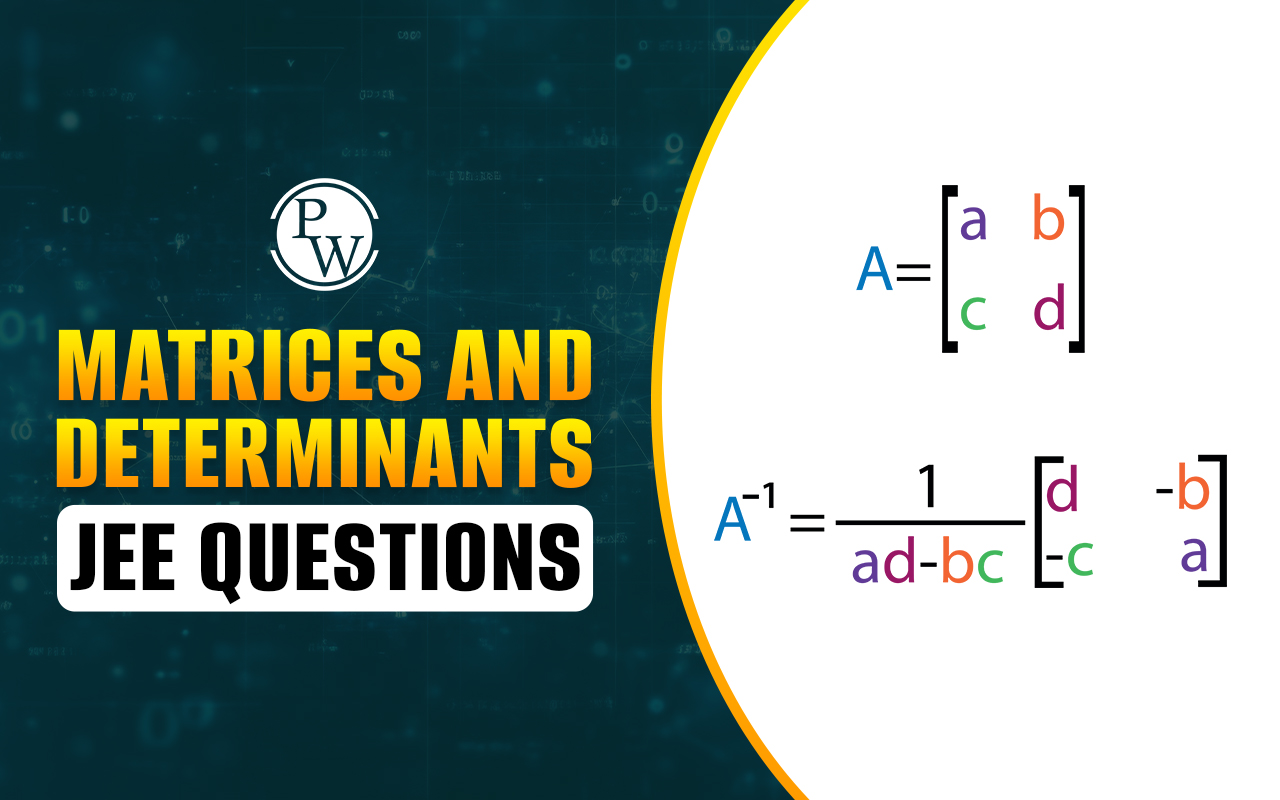
Difference Between Whole Numbers And Natural Numbers : The main difference between natural numbers and whole numbers is related to the number 0, which is only a part of the set of whole numbers and is not present in the set of natural numbers.
What are Whole Numbers?
Whole numbers are a collection of numbers that include all of the natural numbers (positive integers) as well as zero. These numbers are not negative and contain no fractions or decimals. In other words, whole numbers are made up of zero, one, two, three, four, and so on, extending indefinitely in the positive direction. It is to be noted that positive integers and natural numbers are also considered whole numbers, whereas fractions and decimals do not come under whole numbers. Arithmetic operations like addition, subtraction, multiplication, and division are possible on whole numbers. A few examples of whole numbers are 0, 15, 37, 97, 67, etc. The set of whole numbers is frequently represented by the symbols "W" or "Z+," and it is used in a variety of mathematical contexts, such as counting objects or representing positions on a number line. Whole numbers are a subset of integers that also include negative numbers and zero.What Are Natural Numbers?
Natural numbers are a collection of positive integers beginning with 1 and extending indefinitely. In other words, natural numbers are counting numbers that do not include zero or any negative integers. The symbol "N" represents the set of natural numbers. Mathematically, the natural numbers are expressed as: N={1,2,3,4,...} These numbers are used for counting and ordering, representing quantities of objects or positions in a sequence. Natural numbers are a fundamental concept in mathematics and lay the foundation for other number sets, such as whole numbers, integers, rational numbers, and real numbers. The number one is thought to be the smallest natural number. As a result, 0 and negative numbers, fractions, and decimals are not considered natural numbers. Natural numbers include 46, 72, 25, 888, 560, and many more.
Difference between Whole Numbers and Natural Numbers
Whole numbers start from zero, whereas natural numbers start from one to infinity. Check Some more major differences between whole numbers and natural numbers are given in the table below.| Difference between Natural and Whole Numbers | |
| Natural Numbers | Whole Numbers |
| Natural numbers are defined as counting numbers. These are the basic counting numbers, starting from 1 to infinite. | Whole numbers are the set of natural numbers and zero. The whole number starts from 0 to infinite. |
| All positive integers are included in the set of natural numbers | All positive integers and zeros are included in the set of whole numbers |
| Natural numbers are represented using the letter “N” | Whole numbers are represented using the letter “W” |
| Counting in the set starts from 1 | Counting in the set starts from 0 |
| All natural numbers are considered whole numbers | All whole numbers are not considered natural numbers |
| Natural Numbers are closed under addition and multiplication | Whole numbers are closed under addition and multiplication |
Properties for Whole and Natural Numbers
Explanation of Addition Property of Natural and Whole Numbers
When two natural numbers are added, it results in only one natural number. Example: 84+ 21 = 105 Adding two whole numbers will give you a whole number. Example: 7+ 0 = 7Explanation of Subtraction Property of Natural and Whole Numbers
Subtraction of two natural numbers doesn’t necessarily result in a natural number Example: 5-2 = 3 is a natural number But 2-5 = -3 is not a natural number The situation is similar for whole numbers. Subtraction of two whole numbers does not have to result in a whole number.Explanation of Multiplication Property of Natural and Whole Numbers
Multiplying a natural number by another natural number and a whole number by another whole number yields a natural number and a whole number, respectively. Example: 4 x 3 = 12 is a natural number 8 x 5 = 40 is a whole number, where 8 and 0 are also whole numbers.Explanation of Division Property for Natural and Whole Numbers
The division property does not apply to natural numbers or whole numbers, for example. Example: 10/2 = 5 is natural, as well as the whole number But 7/2 = 3.5 is neither natural nor the whole number.Number Line Representation of Whole and Natural Numbers
Similarly, the difference between natural numbers and whole numbers can be understood by drawing a number line between them. Whole numbers, including zero, are on the right side of the number line. Natural numbers, with the exception of zero, are located on the right side.Difference between Whole and Natural Numbers FAQs
Q1. Is every whole number a natural number?
Ans. Every whole number is a natural number, but not every natural number is a whole number.
Q2. What is the difference between a whole number and a real number?
Ans. On a number line, integers are all whole numbers and their inverses. A real number on a number line is any point on the number line. A fractional or decimal number is not an integer. Real numbers are fractional or decimal numbers.
Q3. Is 2.5 a natural number?
Ans. Dividing two natural numbers and whole numbers may or may not produce natural and whole numbers. If the result is in a fraction or decimal, it is not considered a natural or whole number. 5/2 = 2.5, on the other hand, is neither a natural nor a whole number.
Talk to a counsellorHave doubts? Our support team will be happy to assist you!

Check out these Related Articles
Free Learning Resources
PW Books
Notes (Class 10-12)
PW Study Materials
Notes (Class 6-9)
Ncert Solutions
Govt Exams
Class 6th to 12th Online Courses
Govt Job Exams Courses
UPSC Coaching
Defence Exam Coaching
Gate Exam Coaching
Other Exams
Know about Physics Wallah
Physics Wallah is an Indian edtech platform that provides accessible & comprehensive learning experiences to students from Class 6th to postgraduate level. We also provide extensive NCERT solutions, sample paper, NEET, JEE Mains, BITSAT previous year papers & more such resources to students. Physics Wallah also caters to over 3.5 million registered students and over 78 lakh+ Youtube subscribers with 4.8 rating on its app.
We Stand Out because
We provide students with intensive courses with India’s qualified & experienced faculties & mentors. PW strives to make the learning experience comprehensive and accessible for students of all sections of society. We believe in empowering every single student who couldn't dream of a good career in engineering and medical field earlier.
Our Key Focus Areas
Physics Wallah's main focus is to make the learning experience as economical as possible for all students. With our affordable courses like Lakshya, Udaan and Arjuna and many others, we have been able to provide a platform for lakhs of aspirants. From providing Chemistry, Maths, Physics formula to giving e-books of eminent authors like RD Sharma, RS Aggarwal and Lakhmir Singh, PW focuses on every single student's need for preparation.
What Makes Us Different
Physics Wallah strives to develop a comprehensive pedagogical structure for students, where they get a state-of-the-art learning experience with study material and resources. Apart from catering students preparing for JEE Mains and NEET, PW also provides study material for each state board like Uttar Pradesh, Bihar, and others
Copyright © 2025 Physicswallah Limited All rights reserved.












